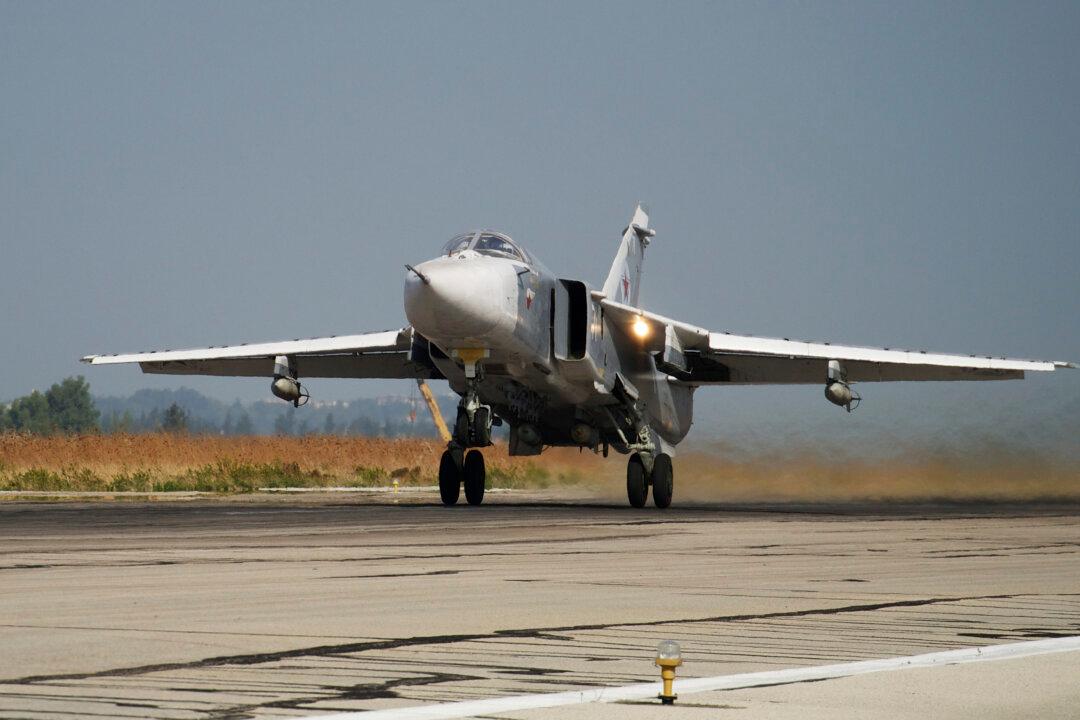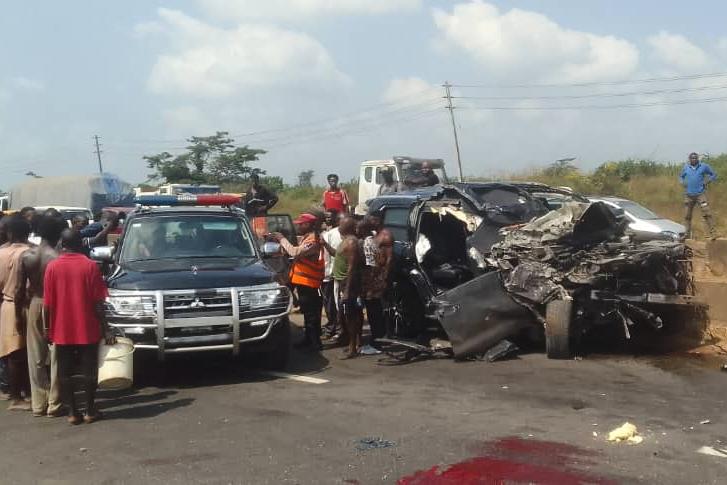HEMEIMEEM AIR BASE, Syria—Russian warplanes were taking off one after another with roaring thunder on Wednesday from their base on Syria’s coast, which was bustling with activity as Moscow pressed its air blitz days before scheduled peace talks.
Helicopter gunships were sweeping low around the base in the province of Latakia to prevent any possible attack. Even though the front line is dozens of kilometers away and the area around the base is tightly controlled, the Russian military methodically patrols the area to make sure there is no ground threat.
Two heavy transport planes were parked near the main terminal as soldiers toting assault rifles stood guard.
Since Russia launched its air campaign in Syria on Sept. 30, its warplanes have flown nearly 6,000 missions. The number is impressive for a compact force comprising just a few dozen warplanes.
The Russian military brought a group of Moscow-based reporters to the base on Wednesday to see the operations. Defense Ministry spokesman Maj. Gen. Igor Konashenkov said Tuesday that over the previous four days Russian warplanes had flown 157 sorties striking 579 targets in six Syrian regions, and the pace showed no sign of letting up Wednesday.
The Russian military has said it was targeting the Islamic State group and other extremists and has angrily dismissed Western accusations of hitting moderate rebels fighting Syrian President Bashar Assad. Moscow also has rejected claims that its aircraft have hit civilians, insisting all casualties have been at extremist facilities away from populated areas.
Konashenko said the Syrian government forces have retaken about 250 villages and towns from extremists thanks to the Russian air campaign. He said each target is verified through multiple intelligence sources before Russian planes hit it.
The Syrian government and the opposition are set to sit down for talks in Geneva, scheduled for Monday. The negotiations are meant to pave the way for a political settlement with a new constitution and elections in a year and a half, but hopes for their success are dim.
International negotiators, including the United States and its allies and Assad’s backers, Russia and Iran, have failed to reach common ground on which of the myriad Syrian militant groups should be considered extremists and fair game for strikes and which should be part of political talks.
Russian Foreign Minister Sergey Lavrov and U.S. Secretary of State John Kerry were meeting in Switzerland on Wednesday to try to resolve the differences over who is eligible to join the U.N.-mediated peace talks.
Meanwhile, the relentless Russian air campaign has helped the Syrian army recover and regroup after a series of failures last year and score significant battlefield gains in recent weeks.
Some believe that a string of military successes would likely encourage Assad’s government to take a tough stance in the talks.





